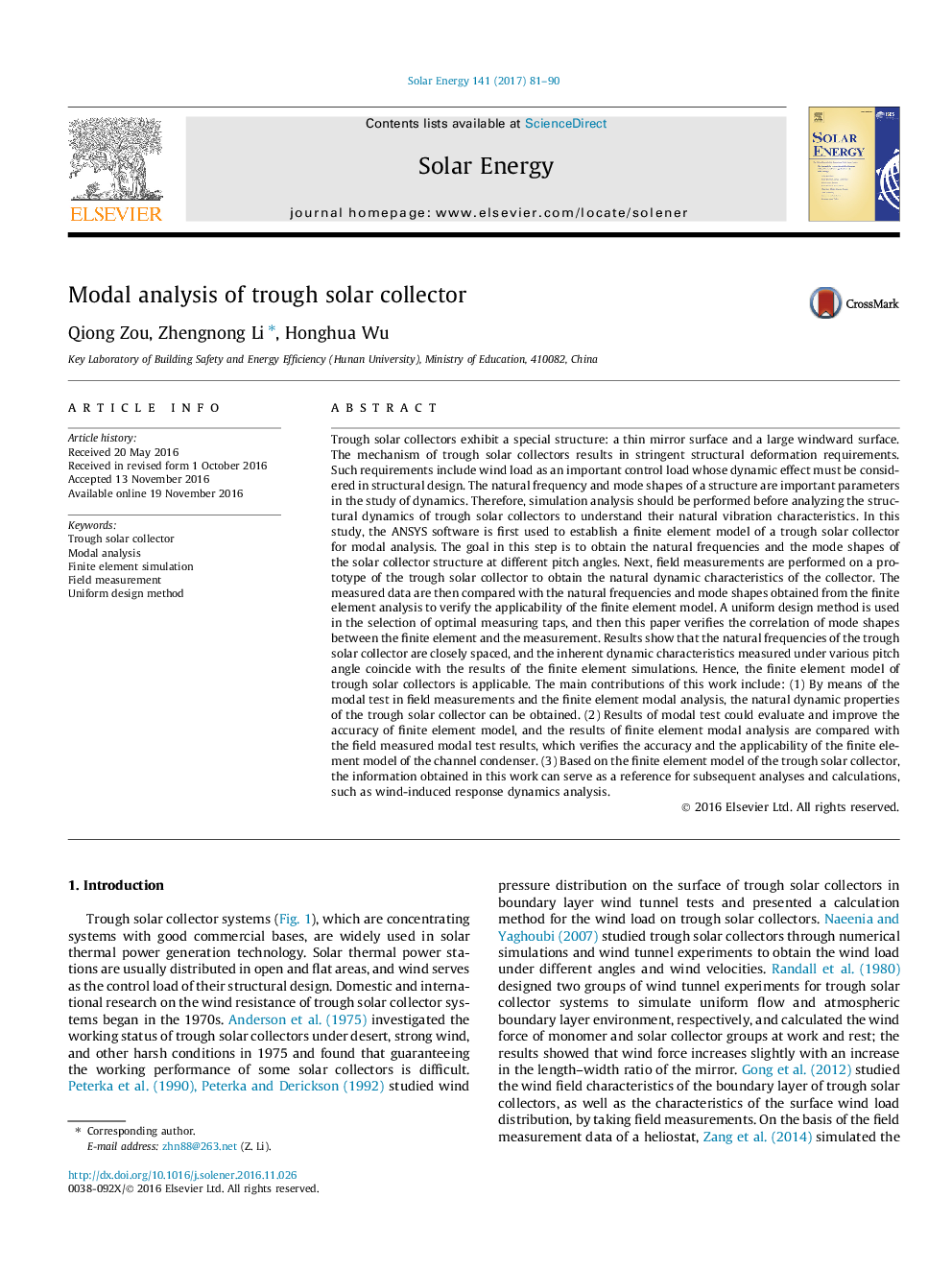| کد مقاله | کد نشریه | سال انتشار | مقاله انگلیسی | نسخه تمام متن |
|---|---|---|---|---|
| 5451336 | 1513077 | 2017 | 10 صفحه PDF | دانلود رایگان |
- The natural frequencies and the mode shapes of the trough solar collector are provided.
- The finite element model of trough solar collectors is applicable.
- A uniform design method is used in the selection of optimal measuring taps.
- Finite element simulation and field measurement are adopted for the modal analysis.
Trough solar collectors exhibit a special structure: a thin mirror surface and a large windward surface. The mechanism of trough solar collectors results in stringent structural deformation requirements. Such requirements include wind load as an important control load whose dynamic effect must be considered in structural design. The natural frequency and mode shapes of a structure are important parameters in the study of dynamics. Therefore, simulation analysis should be performed before analyzing the structural dynamics of trough solar collectors to understand their natural vibration characteristics. In this study, the ANSYS software is first used to establish a finite element model of a trough solar collector for modal analysis. The goal in this step is to obtain the natural frequencies and the mode shapes of the solar collector structure at different pitch angles. Next, field measurements are performed on a prototype of the trough solar collector to obtain the natural dynamic characteristics of the collector. The measured data are then compared with the natural frequencies and mode shapes obtained from the finite element analysis to verify the applicability of the finite element model. A uniform design method is used in the selection of optimal measuring taps, and then this paper verifies the correlation of mode shapes between the finite element and the measurement. Results show that the natural frequencies of the trough solar collector are closely spaced, and the inherent dynamic characteristics measured under various pitch angle coincide with the results of the finite element simulations. Hence, the finite element model of trough solar collectors is applicable. The main contributions of this work include: (1) By means of the modal test in field measurements and the finite element modal analysis, the natural dynamic properties of the trough solar collector can be obtained. (2) Results of modal test could evaluate and improve the accuracy of finite element model, and the results of finite element modal analysis are compared with the field measured modal test results, which verifies the accuracy and the applicability of the finite element model of the channel condenser. (3) Based on the finite element model of the trough solar collector, the information obtained in this work can serve as a reference for subsequent analyses and calculations, such as wind-induced response dynamics analysis.
Journal: Solar Energy - Volume 141, 1 January 2017, Pages 81-90
